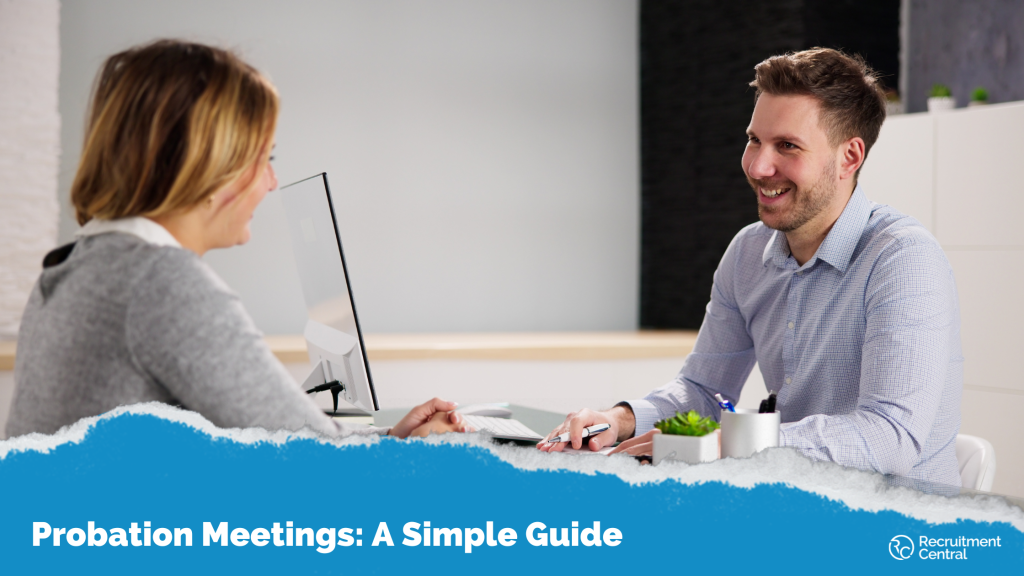Probation meetings for managers don’t have to be hard. In fact, probation meetings matter because they’re a built-in checkpoint to make sure your new hire is settling in, learning the ropes and meeting expectations. They’re also a safeguard for you as a manager: you get a chance to address issues early, document what’s happening and make fair decisions about confirming, extending or ending probation.
Handled well, probation meetings help you:
- Retain good people by showing support.
- Reduce the risk of misunderstandings or disputes.
- Build a culture of feedback and accountability.
Handled poorly, they can lead to surprises, legal headaches and a big waste of time and money for your business.
The Good News: You Don’t Need a Big Process
Many time-poor managers dread probation reviews because they picture a long HR form or a formal panel. In reality, a short, structured conversation backed by a few notes is enough to meet your obligations and do right by your employee.
This guide gives you a quick, repeatable way to run a probation meeting that’s fair, simple and legally sound.
Step 1: Quick Probation Meeting Prep (10–15 Minutes)
Before the meeting, spend a few minutes gathering your thoughts. Jot down:
- Goals and expectations: Pull up the job description or onboarding plan. Remind yourself what “good” looks like.
- Feedback: Ask the person’s buddy, peers or customers for quick impressions.
- Wins and concerns: List what you’ve noticed – achievements, positive behaviours, and any gaps.
- Next steps: Think about training, support or new responsibilities you might want to offer.
Doing this prep means you go into the meeting with examples. That makes your feedback specific, not vague – which is both fairer and more useful.
Step 2: Run a Simple, Two-Way Conversation
During the meeting, you don’t need a script. Use these simple prompts:
- Start positive: “Here’s what’s going well so far…”
- Discuss challenges: “Here are a couple of areas to improve…”
- Ask for their view: “How are you feeling about the role and workload?” “What’s been most challenging?”
- Agree next steps: “Here’s what we’ll focus on between now and your probation review…”
This keeps the conversation supportive but clear. It also gives the employee a voice, which is important for engagement and fairness.
Step 3: After the Probation Meeting
Once you’ve finished, send a short follow-up email or note. Summarise:
- Key points discussed.
- Goals or changes agreed.
- Any improvement targets and timelines.
- Document the meeting in their employee file.
This creates a simple paper trail. If you need to extend probation or end it, you’ll have a fair record. If you’re confirming them, you’ll have clear evidence of progress.
A Quick Word on Fair Work
In Australia, most probation periods run for about six months because that matches the qualifying period for unfair dismissal protections under the Fair Work Act. Employees on probation still get all the usual workplace entitlements (pay, leave, safety, general protections).
You don’t need to become a legal expert, but it’s good practice to make sure:
- The probation length and expectations are written in the contract.
- You give at least the minimum notice if ending employment.
- You treat employees fairly and document your meetings.
For full details, check the official Fair Work Australia guidelines on probation.
The Bottom Line
Probation meetings don’t have to be complicated. With 10–15 minutes of prep and a short, structured conversation, you can:
- Support your new hire to succeed.
- Protect your business legally.
- Make fair, confident decisions about confirming employment.
Need help with hiring or onboarding?
Talk to our team at Recruitment Central for advice on making probation reviews simple and effective.
Looking for extra support to improve your recruitment and hiring process?
Explore our Employer Resources Hub for hiring strategies, templates and proven best practices.
You can also get refreshed with our Guide to Hiring Employees Made Easy, then stay ahead by subscribing for monthly insights, industry data and recruitment trends here.
For further employer-facing recruitment and hiring law guidance, visit this page.


















